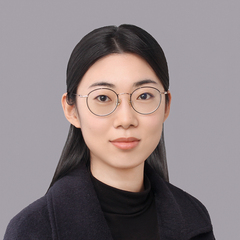- About
- Education
- Admissions
- News
- Research
- People
- Resource
link
nav
- About
- Education
- Admissions
- News
- Research
- People
- Resource

Research direction:
1. Environmental behavior, human factors ergonomics, evidence-based design;
2. Computer vision, panoramic vision technology, urban information modeling (CIM);
3. Data-driven architectural design methods, parametric translation and activation of classical gardens.
Dr. Zhu Haipeng is a lecturer at the School of Architecture, Southeast University, and a visiting scholar at ETH Zurich (2018–2019). His research focuses on visual information analysis and simulation in built environments, spatial cognition and behavior in built environments, and data-driven architectural design pedagogy.
I. Scientific Research
1. Research Projects
· Principal Investigator of 2 national/provincial-level projects:
· National Natural Science Foundation of China (NSFC) Youth Program:“Temporal ‘Representation-Perception’ Model and Optimization Design of Classical Garden Touring Spaces from the Perspective of Path Structure Evolution” ;
· Ministry of Education Humanities and Social Sciences Youth Program:“ Study on the Touring Experience Mechanism of Suzhou Classical Gardens from the Perspective of Historical Path Structure Evolution”.
·Participant in 3 national/provincial-level projects:
· NSFC Key Program: “Reconstructing Contemporary Architectural Systems Based on the ‘Architecture-Human-Environment’ Coherence Mechanism with Chinese Cultural Context”;
· NSFC General Programs (2 projects).
2. Publications
Authored over 10 papers in high-impact international journals and conferences, including:
· “Sustainable Cities and Society ”(SCI-Q1, CAS 1区 Top, IF: 10.5):
“A Method of Estimating the Spatiotemporal Distribution of Reflected Sunlight from Glass Curtain Walls in High-rise Business Districts using Street-view Panoramas”—proposed a street-view panorama-based method for estimating spatiotemporal sunlight reflection distribution in urban environments.
· “Frontiers of Architectural Research” (A&HCI-Q1, IF: 3.1):
“Effects of Scenery Frame on Visual Depth Perception in Classical Chinese Gardens: A Case Study of the Lvyin Pavilion in Lingering Garden”—validated the mechanism of framed scenery techniques on spatial depth perception using physiological measurements and CAVE-based VR experiments.
· “Landscape Architecture” (Peking University Core):
“Panoramic Technology-Based Visual Analysis of Garden Touring Experience: A Case Study of Lingering Garden”—developed a dynamic visual analysis framework for environmental perception using panoramic imaging.
II. Teaching
1. Courses
Co-taught graduate design course:
· “Poetics and Construction of Curved Surfaces (I)—BIM-Driven Smart Design and Fabrication of UHPC Structures with Layered Multi-Surface Component Assemblies”.
2. Textbooks
Contributed to the 13th Five-Year Plan national textbook:“Interpretation of Architectural Classics”.
III. Professional Practice
Participated in over 10 design projects, including exhibiting at the China Pavilion, 17th Venice International Architecture Biennale.

